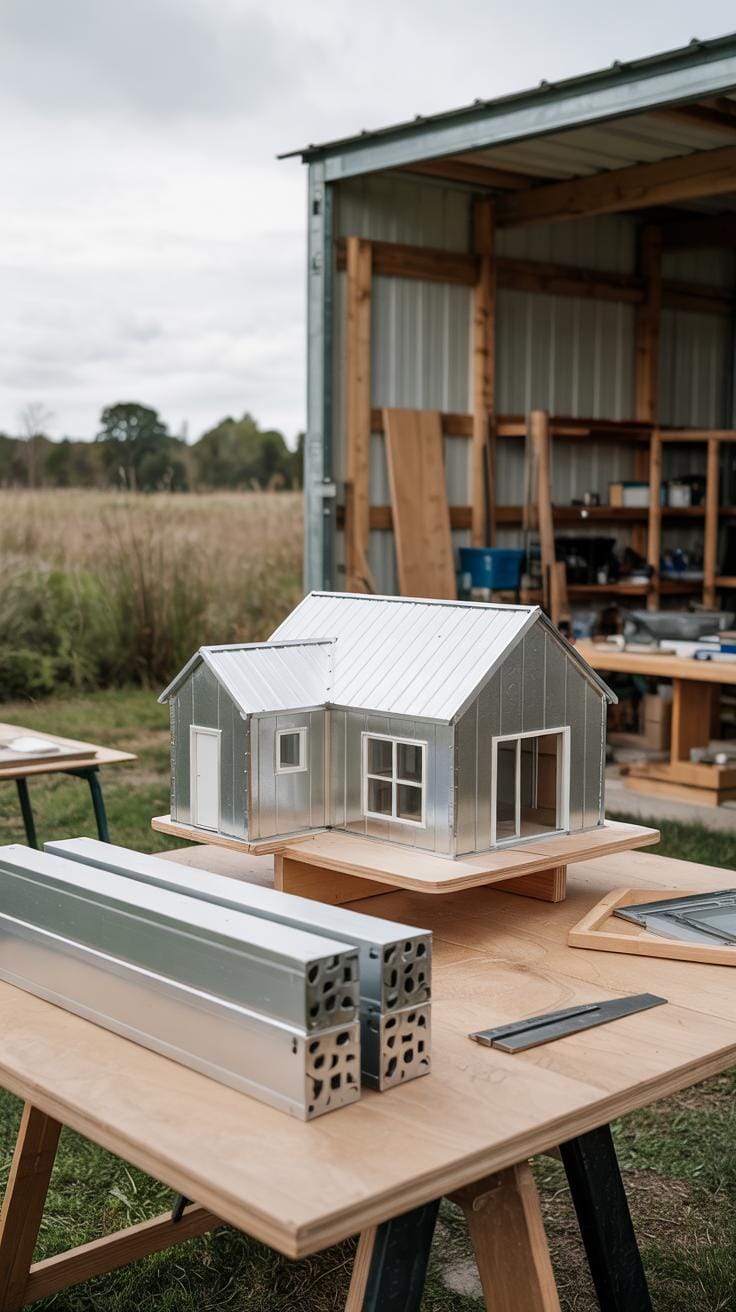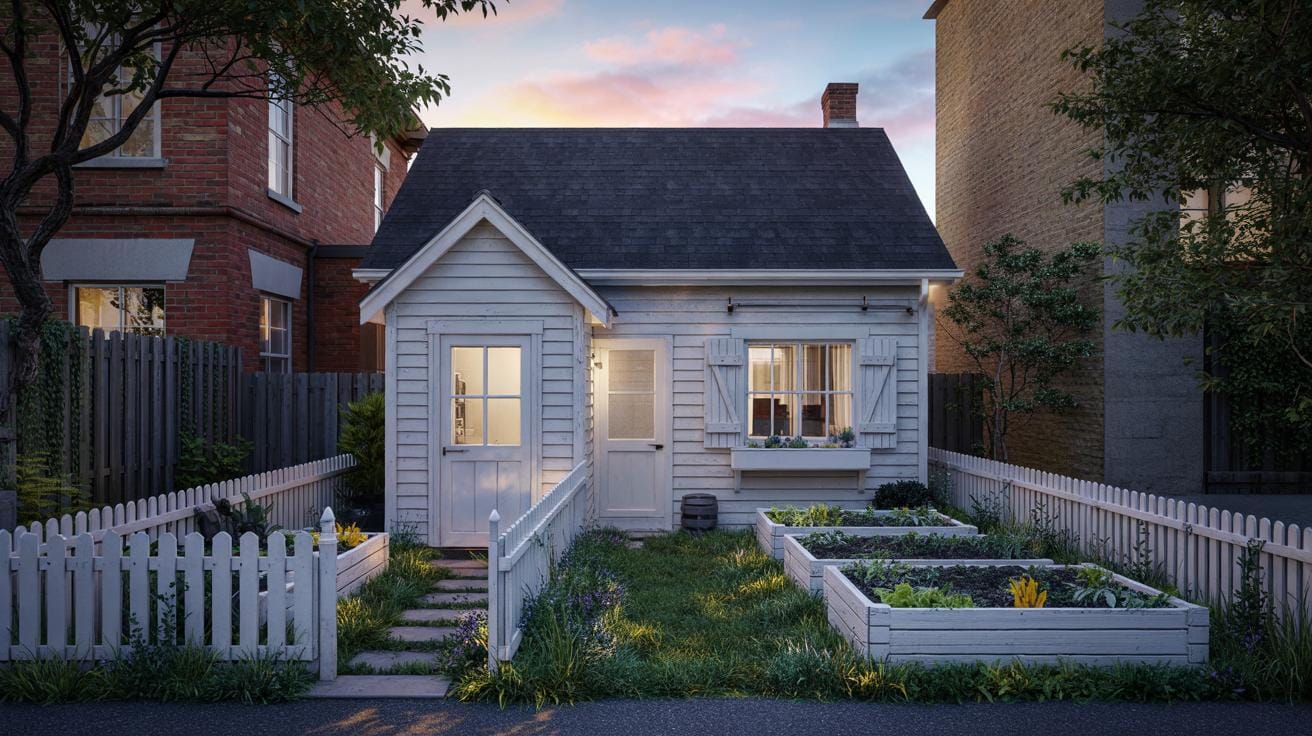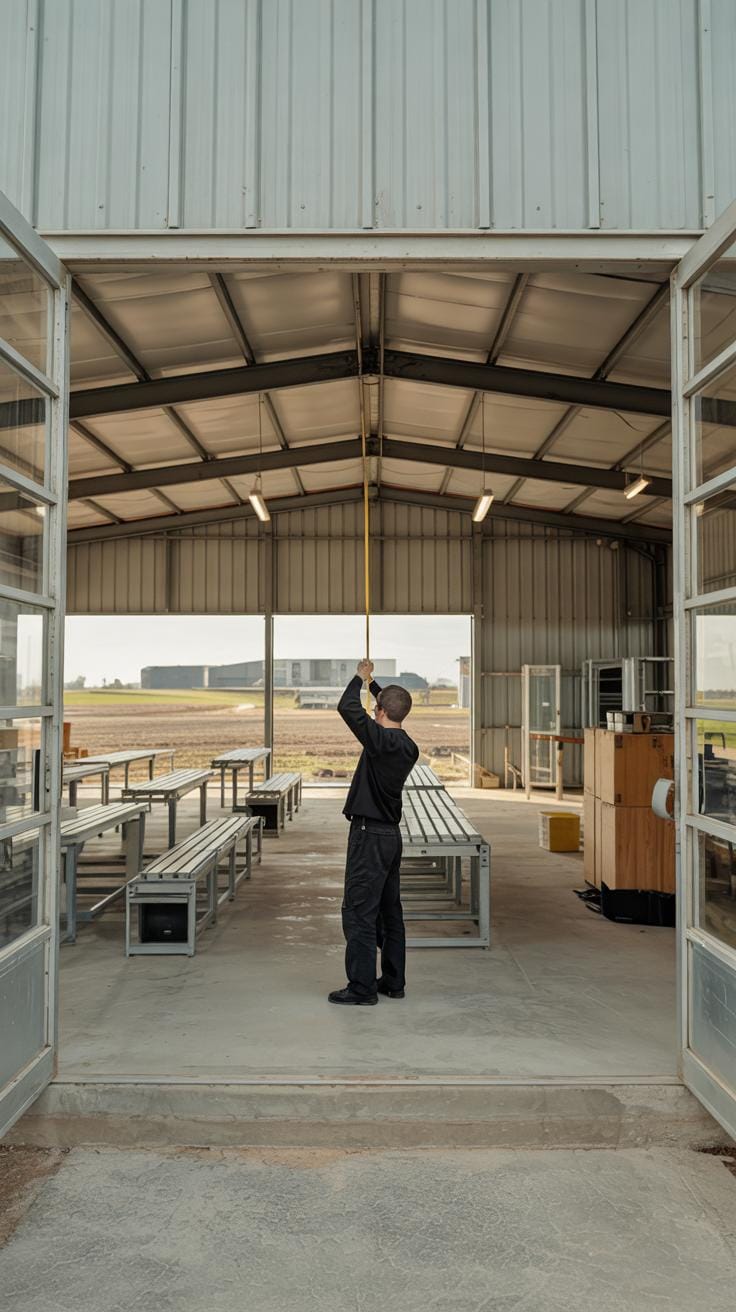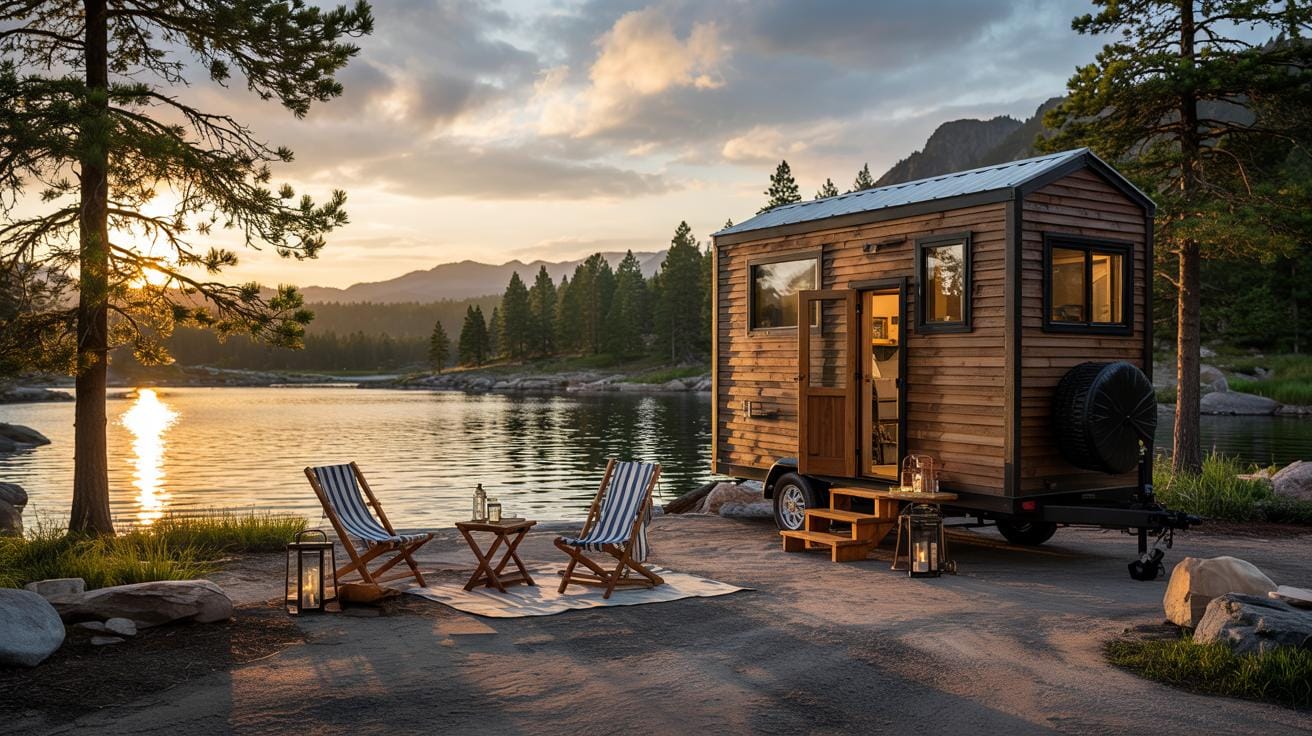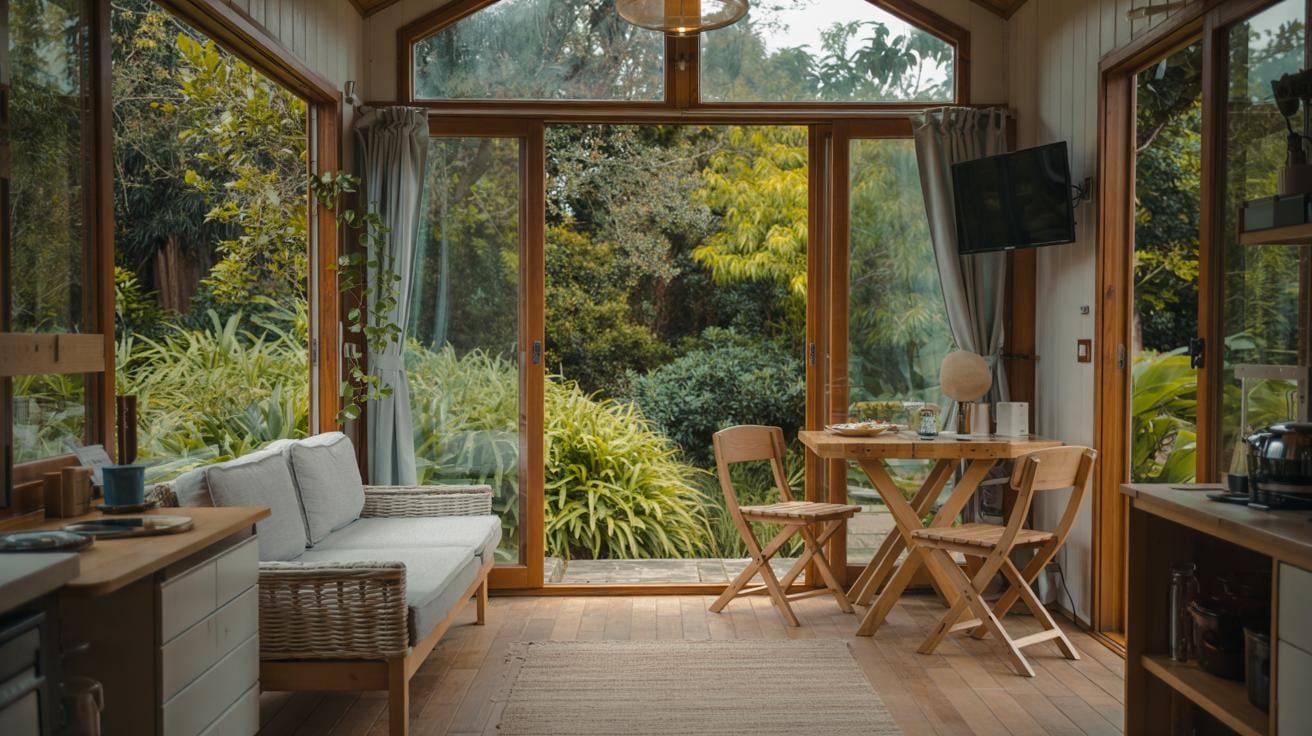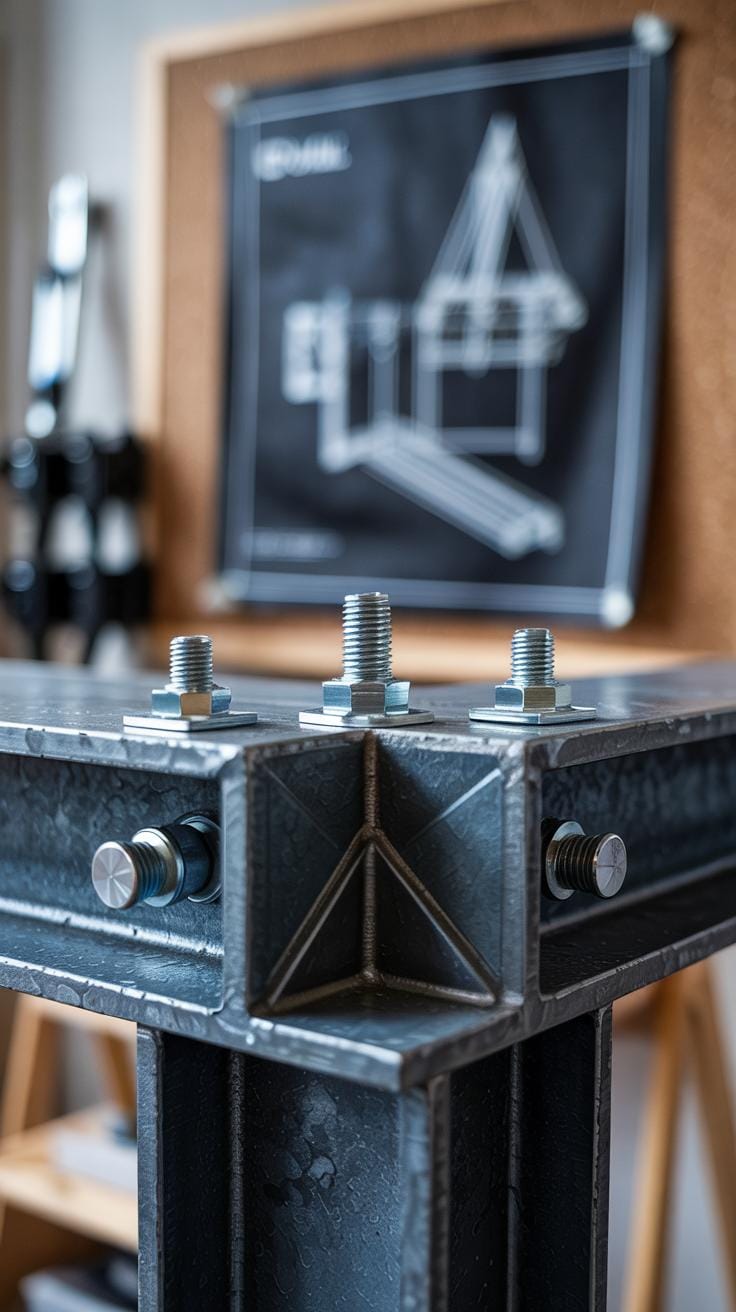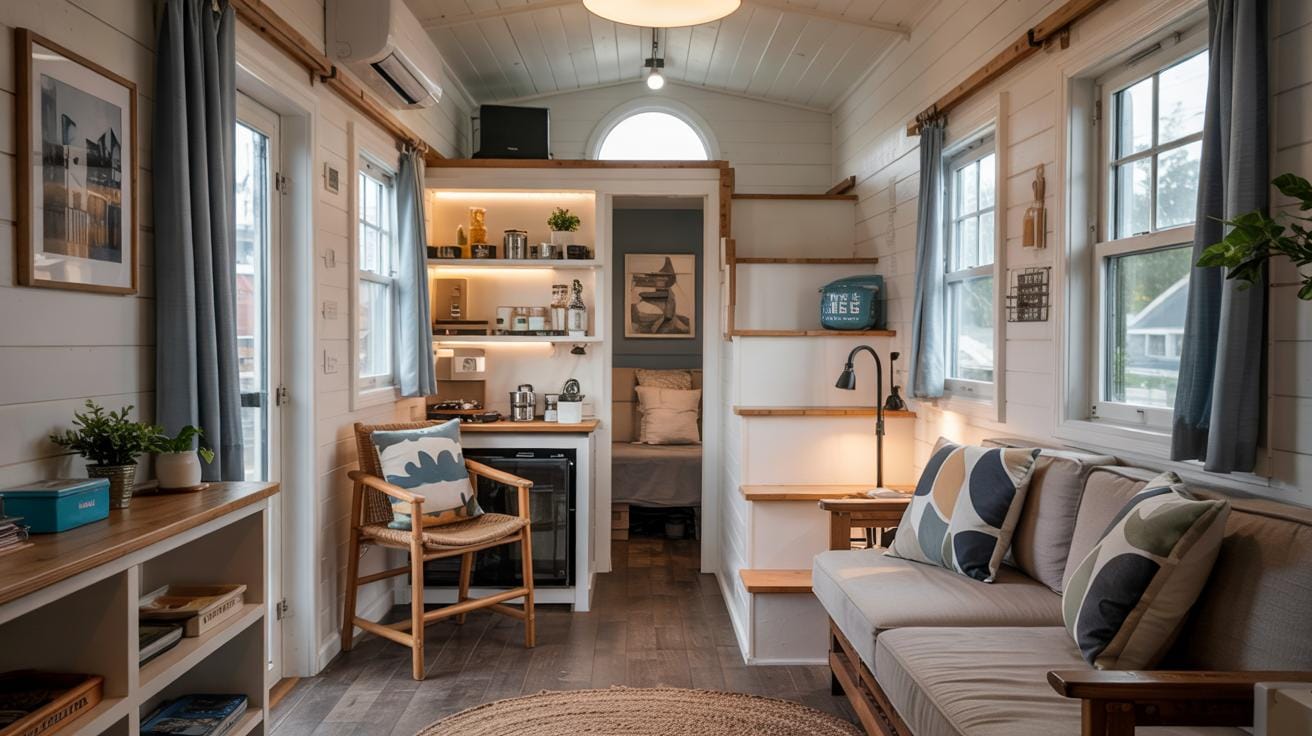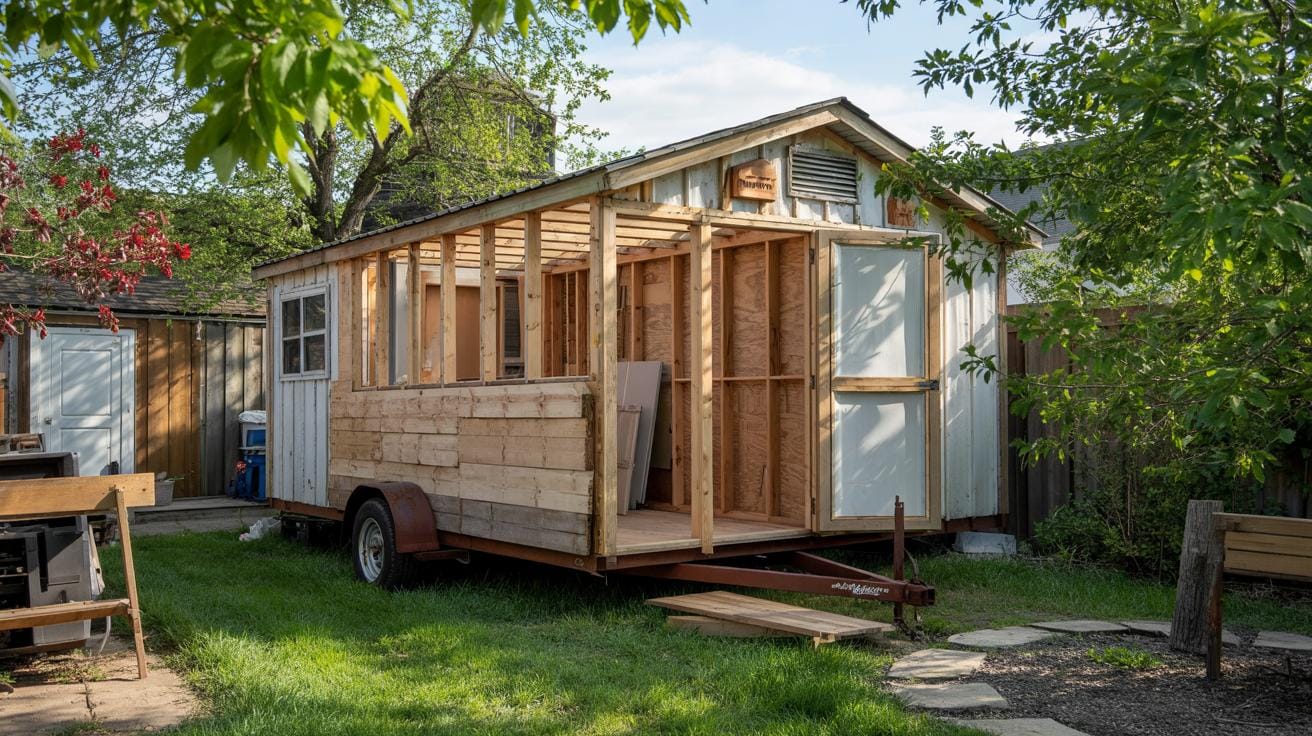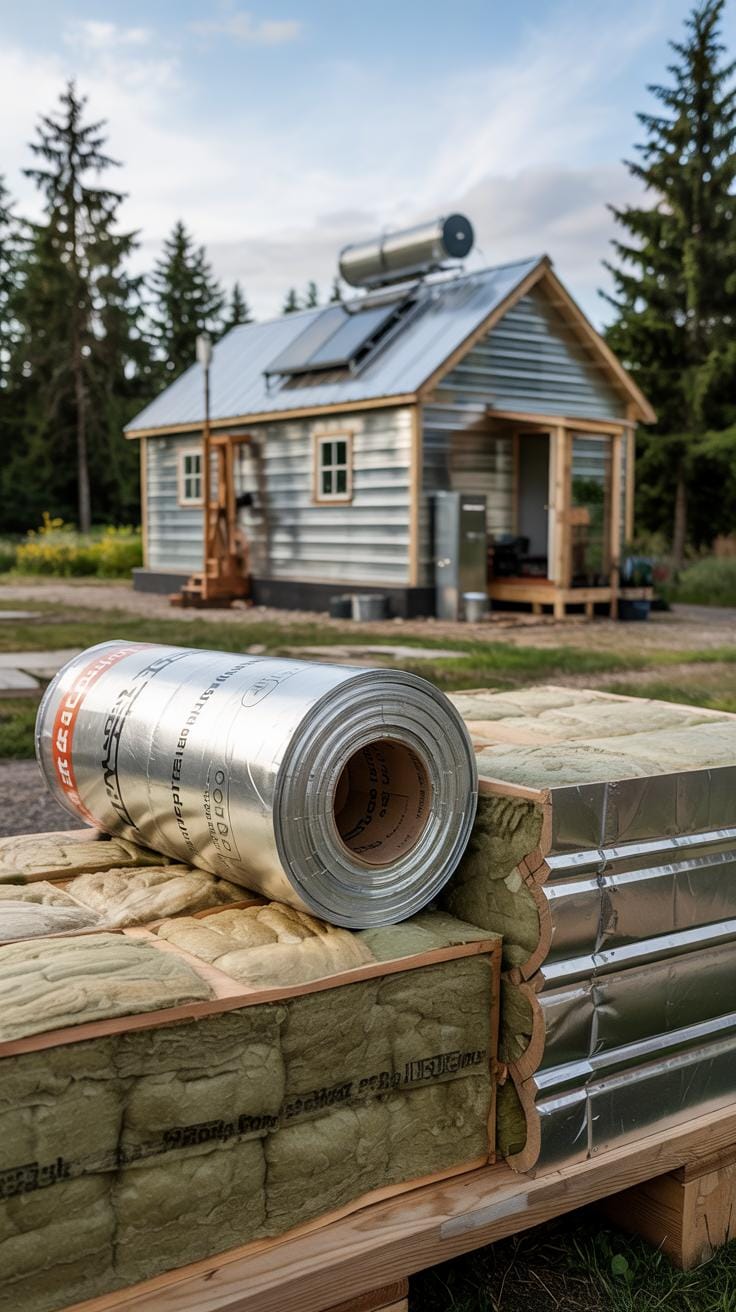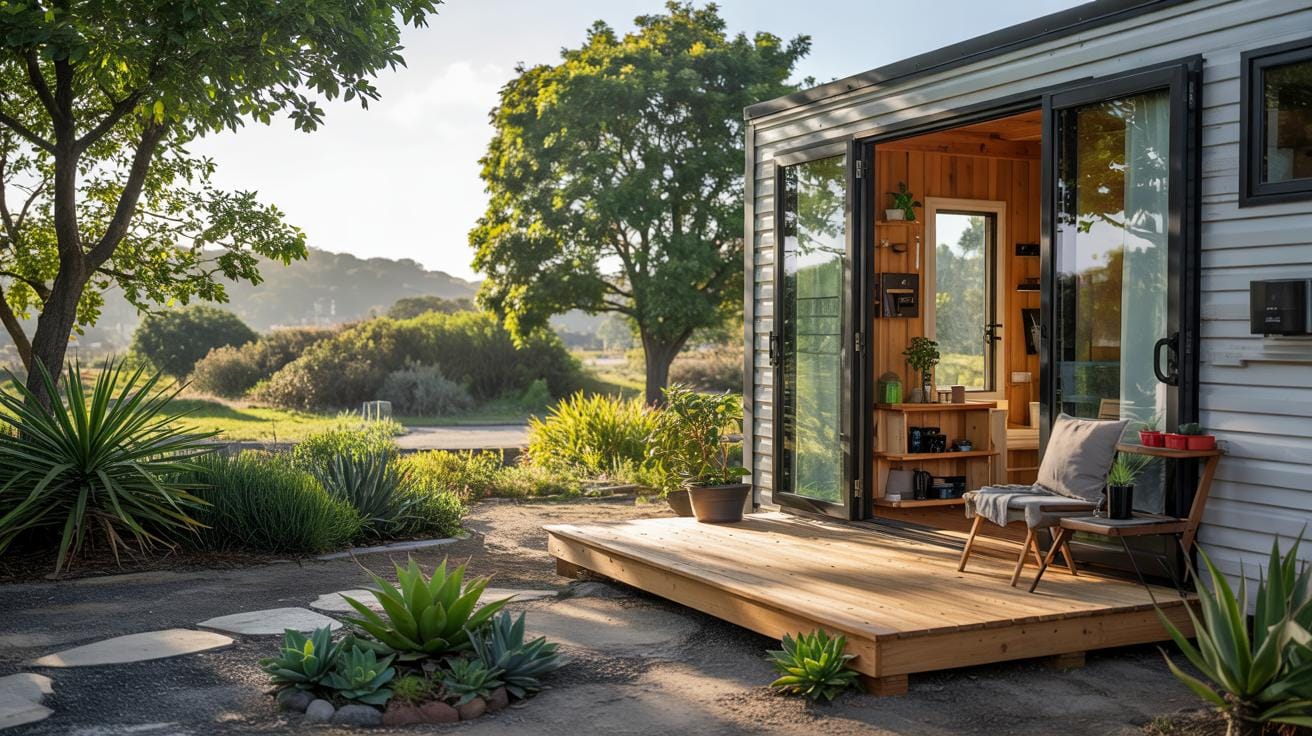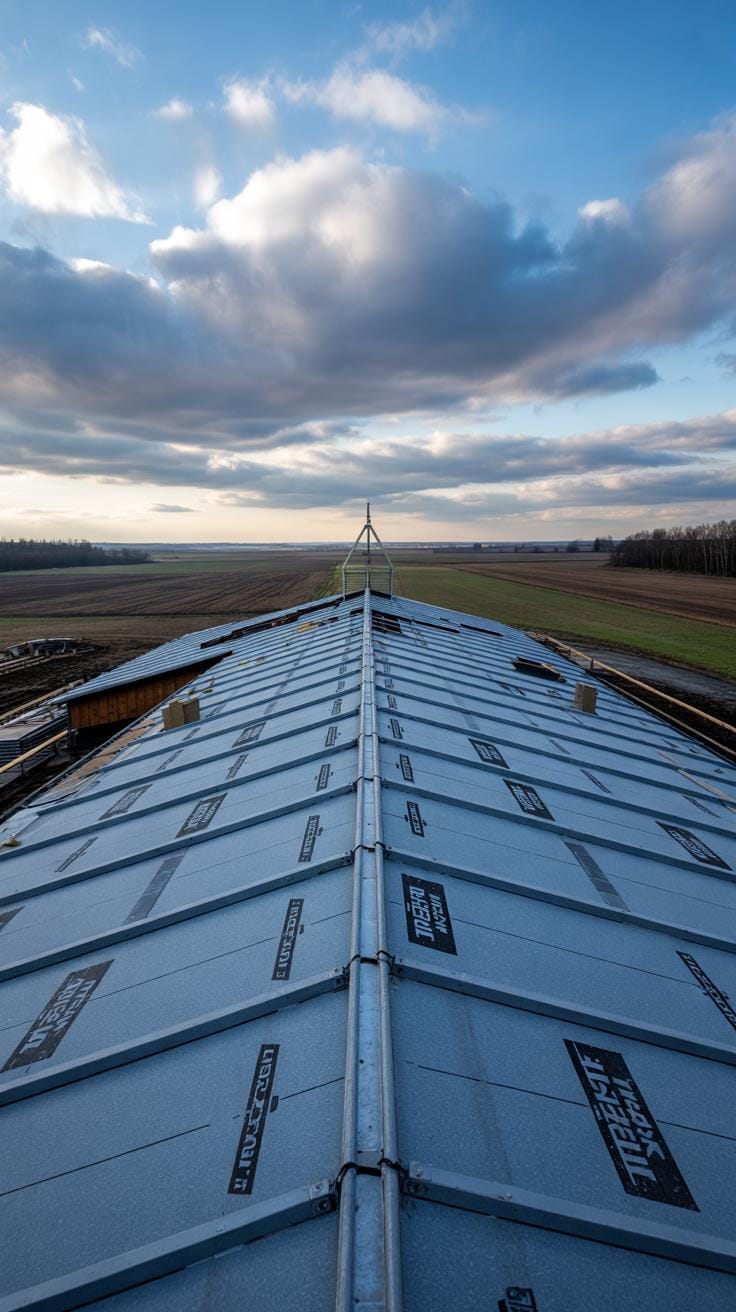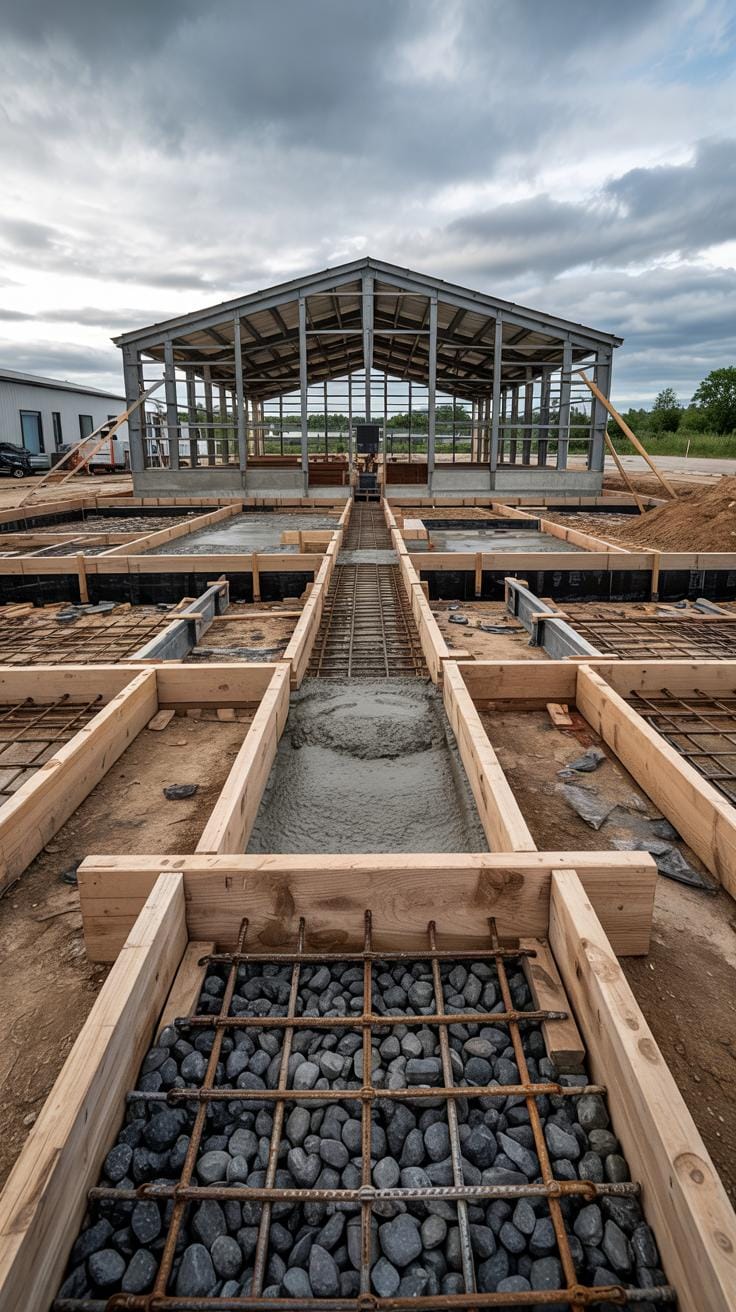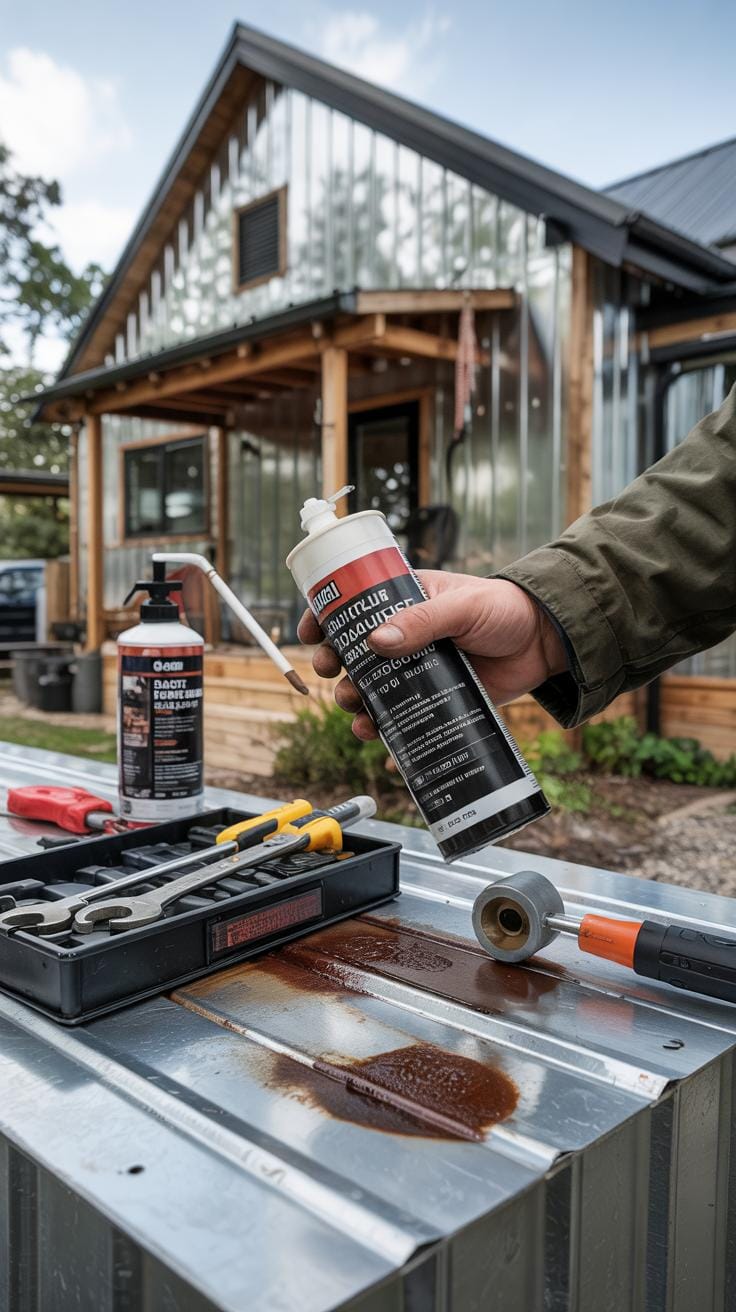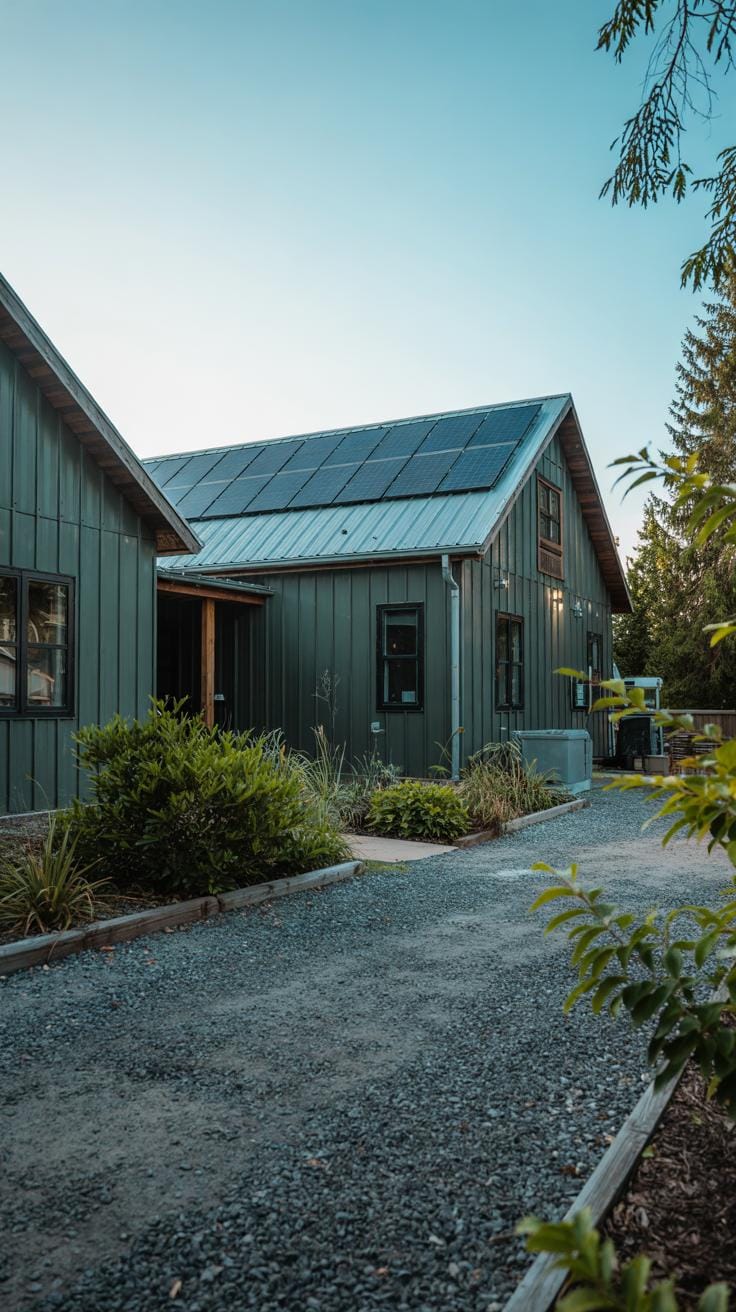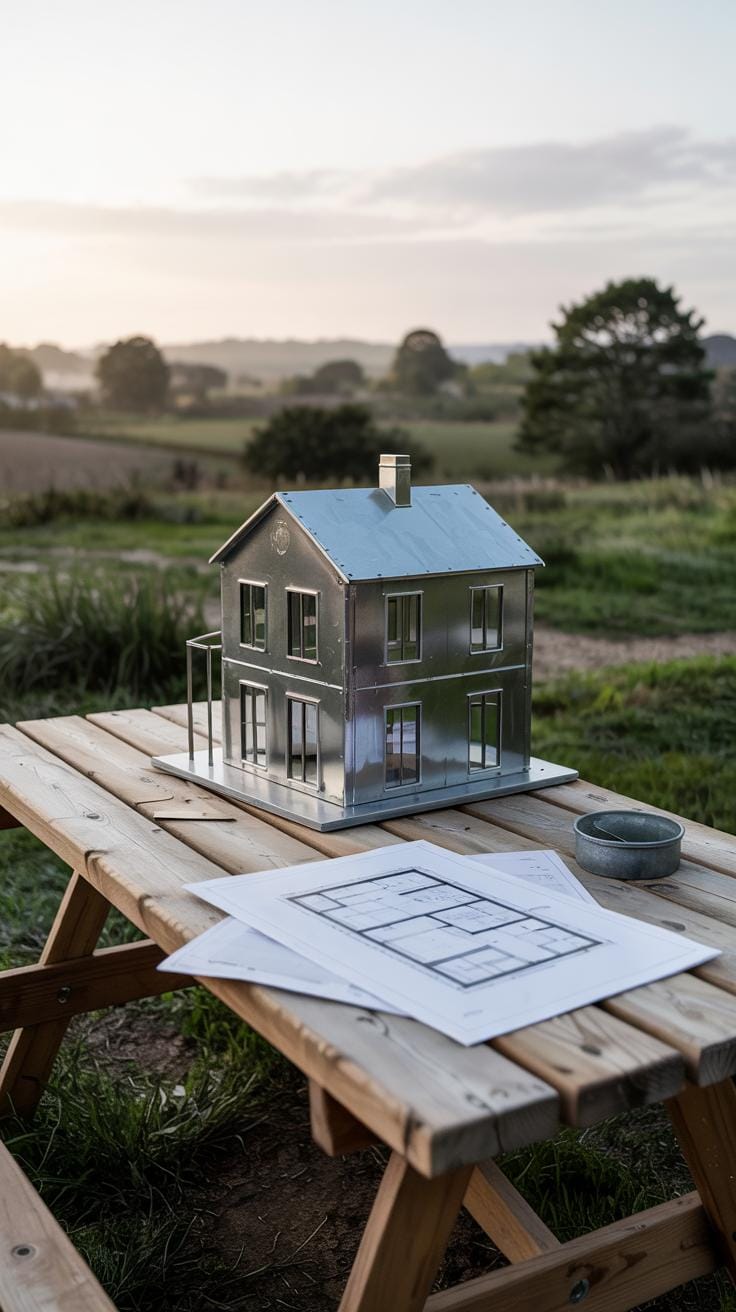Introduction
Small metal building homes offer a practical and affordable housing option for many people. These homes use metal as a key material, known for its strength and resistance to the elements. You will find that metal homes can be built quickly and often cost less than traditional homes. They are highly customizable, which means you can design a living space that fits your lifestyle and preferences. Understanding the benefits and challenges of small metal building homes can help you decide if this home type is right for you.
Durable design plays an essential role in ensuring that your metal home remains safe, comfortable, and efficient over the years. It means choosing materials and building methods that resist weather, reduce maintenance, and support energy savings. This article will guide you through key points about small metal building homes and how to create strong, durable designs. Ready to explore practical tips and ideas for your metal home project?
Understanding Small Metal Building Homes
Small metal building homes use steel or aluminum frames and panels to create compact living spaces. These homes often feature metal walls, roofs, and structural supports. Builders typically assemble pre-fabricated parts on-site, speeding up construction. You can expect simple, strong, and lightweight frames that stand up to weather and time.
Many choose metal homes because they cost less than traditional houses. The speed of assembly helps reduce labor costs and lets you move in faster. Metal resists fire and moisture better than wood, which might cut down on insurance or repair bills. Are you looking for a home that fits your budget and timeline? Metal buildings may offer an answer.
What Makes Metal Homes Different
Metal homes last longer without rotting or warping like wood. They resist pests such as termites that often damage other homes. You won’t need to repaint or treat the exterior as often. Metal panels shed water easily, reducing risk of mold and leaks.
Maintenance tends to require basic upkeep like tightening fasteners or cleaning. This cuts down both effort and expense over time. How often do you spend fixing issues in your current home? Metal homes aim to reduce those headaches.
Common Uses and Popularity
Rural homeowners often pick metal buildings for guest houses or workshops. Urban residents increasingly select small metal homes due to limited space and rising costs. Builders adapt metal designs to fit modern lifestyles, adding efficient layouts and energy-saving features.
Trends toward tiny living and eco-friendly options have boosted interest in metal homes. Their quick build time suits people needing housing fast after job changes or relocation. Would a low-maintenance, affordable home work in your situation? More people are asking that question every year.
Benefits of Small Metal Building Homes
Small metal building homes offer practical advantages that fit many lifestyles and budgets. You benefit from lower upfront costs because metal materials cost less than traditional wood or brick. This can make your dream home more affordable.
Construction happens quickly since metal parts are pre-fabricated. This cuts down build time significantly, reducing your stress and letting you move in sooner. Faster construction also lowers labor costs, saving you money.
The design flexibility means you can create a home tailored to your needs. Open floor plans are easy to achieve since metal structures don’t rely on load-bearing walls. You can adjust interior spaces without major expenses.
Your home can keep up with your life changes. Planning to add a workshop or expand living areas? Metal building homes allow those changes with little trouble. What if your needs evolve over time? Metal homes make that possible in ways traditional homes often cannot.
Cost and Time Savings
Metal homes save money on materials since steel and aluminum prices stay steady compared to wood or concrete. This means lower risks of budget overruns. Labor costs drop because workers assemble large metal panels quickly, cutting building time by weeks.
Reduced construction time also lowers financing costs. The sooner your home is complete, the faster you avoid ongoing rent or temporary housing payments. Think about how valuable those days are while waiting for a traditional home to finish.
Weather delays affect metal buildings less. You spend less time stuck waiting for dry days, which often hold back wood construction. When building on a budget or tight schedule, these savings can be crucial.
Customization and Space Use
Metal homes allow open floor plans, which means you decide how spaces connect and flow. Without many internal walls needed for support, you design the layout that suits your lifestyle best.
Need a home office or a hobby room? You can easily add or remove partitions inside. Want to change a room for a growing family? Metal framing lets you do that without heavy remodeling.
These homes provide flexibility in storage and multi-use areas. For example, a garage can become a gym or additional living space later. How do you envision using your home as your needs change? With metal buildings, the answer can be “any way you want.”
Key Considerations for Durable Design
Durability in small metal building homes starts with the materials you pick. Good metal resists rust and damage. You need metals that handle moisture and temperature changes well. Think about steel with protective coatings or aluminum, depending on your climate.
Structural strength matters for safety and comfort. Your home should support heavy snow and strong winds without bending or cracking. Engineering techniques and solid framing add strength and stability. Ever wonder how some metal homes last decades despite harsh weather?
Weather resistance protects your investment. Seals and weatherproof paints stop moisture from corroding metal surfaces. Strong joints prevent leaks and drafts. What if your home could face storms and still keep you safe inside?
Picking the right metal, reinforcing structure, and blocking weather damage build homes that stay strong. This approach ensures lasting comfort, no matter the conditions outside.
Selecting the Right Materials
Choose metals like galvanized steel or aluminum for your home’s frame and panels. Galvanized steel gets coated with zinc, cutting rust on exposed surfaces. Aluminum resists corrosion naturally, ideal for humid or coastal areas.
Look for coatings such as powder coating or specialized paints. These add layers of protection that reduce wear from rain and UV rays. How long will your metal stand up before it needs repainting?
Don’t forget fasteners and trim. Pick stainless steel or coated screws to stop rust in tough spots. Proper materials prevent small issues from growing into costly repairs over time.
Structural Integrity and Safety
Building codes set minimum design standards to keep you safe. They require metal homes to resist wind speeds in your area and handle local snow loads. Engineers calculate loads and use braces or reinforcements where needed.
Metal frame construction should follow these rules strictly. Strong welds and bolts join panels firmly to keep walls and roofs steady during storms. What if a quake hits your area? Proper design ensures your home withstands seismic forces too.
Inspection and planning let you tailor the structure to your environment. A safe metal building home will protect your family and property, no matter what nature throws your way.
Insulation and Energy Efficiency in Metal Homes
Insulation plays a key role in keeping your metal home comfortable all year. Metal walls and roofs can quickly transfer heat or cold, making indoor temperatures harder to control. Good insulation slows this transfer, helping your home stay warmer in winter and cooler in summer.
Reducing temperature swings also lowers your energy bills. Heating and cooling systems work less when insulation keeps the indoor climate steady. Are you trying to save money while living in a small metal building? Proper insulation will be one of your best investments.
Think about how often you feel drafts or hot spots inside your metal home. These issues often point to gaps or thin insulation. Fixing those can improve comfort and reduce wear on your heating or air conditioning units over time. You want a durable design that supports lasting comfort; insulation supports that goal.
Types of Insulation Suitable for Metal Buildings
Different insulation materials work well with metal buildings depending on your climate and budget. Fiberglass batts are common because they fit easily between metal framing and offer good thermal resistance. Spray foam insulation seals tightly and blocks air leaks, making it highly effective.
Rigid foam boards add extra strength and work well on walls or roof panels. Reflective insulation with foil layers helps reduce heat gain in hot climates by reflecting sunlight away. Some builders combine multiple types to get the best results.
If you want to balance cost and performance, a mix of fiberglass batts inside and a reflective radiant barrier outside might be enough. Spray foam works well if you want the tightest seal but it costs more. What kind of environment will your metal home face? Pick insulation that fits those needs.
Improving Energy Efficiency
Sealing gaps and openings is one of the easiest ways to improve energy efficiency in metal homes. Use weatherstripping around doors and windows and caulk joints where metal panels meet. Small cracks can cause big energy losses.
Reflective roofs or roof coatings bounce sunlight away and lower indoor temperatures. This reduces the workload on your air conditioner during hot months. Installing ridge vents and soffit vents helps promote airflow and prevents heat buildup in your attic space.
Adding insulated doors and double-pane windows will also keep heat from escaping or entering. Simple actions like closing curtains during the hottest part of the day or using ceiling fans wisely can contribute to energy savings. What energy-saving tips fit your lifestyle and climate? Small actions add up over time to cut costs and boost comfort.
Roofing and Weather Protection Strategies
Choosing Durable Roofing Materials
Metal roofs suit metal building homes well because they share similar materials and expansion rates. They resist rust and last many years, making them a smart choice for durability and low maintenance. You can pick from steel, aluminum, or zinc roofing, all known for their strength and weather resistance.
Besides metal, synthetic roofing panels or asphalt shingles that attach easily to metal frames can also work. These options offer different looks and insulation benefits. When selecting a roof, consider the local weather and the roof’s ability to handle rain, snow, and heat.
How important is a roof’s lifespan compared to its upfront cost? Choosing right can save you money and effort over time. Examine warranties and test samples if possible to feel the material quality before you build.
Designing for Weather Challenges
A roof design must prevent leaks by using proper seals and overlapping panels carefully. Installing gutters and downspouts helps move rainwater away from the home’s base, reducing damage and erosion. A slight roof pitch encourages snow and water to slide off quickly.
To manage heat, add roofing vents or reflective coatings that lower inside temperatures. Ventilation stops moisture buildup that can cause mold and rust. For cold zones, install snow guards to limit snow sliding off suddenly.
Have you checked if your roof design lets air flow well? Keeping water out and promoting drainage are key parts of lasting home comfort. These practical steps protect your metal home from climate challenges year-round.
Foundations and Site Preparation
A solid foundation keeps your small metal home stable and long-lasting. Without proper support, the structure can shift, crack, or suffer damage from weather and soil changes. Your foundation must hold the weight evenly and protect the building from moisture and pests.
The right site preparation prevents future problems. Prepare the land to avoid uneven settling or drainage issues that could harm your home. Taking time on the foundation and site now saves costly repairs later. What kind of foundation suits your needs? How will you prepare your site for the best start?
Types of Foundations for Metal Buildings
Concrete slabs offer a strong base that resists movement. They work well if your soil drains well and the climate is moderate. Slabs keep pests out but can be costly to install.
Pier foundations use columns spaced under the building. This method reduces concrete use and works in uneven terrain. Piers let air flow under your home, helping to prevent moisture problems.
Crawl space foundations create a small area beneath your building. This space allows access for repairs and can protect plumbing from freezing. However, crawl spaces need ventilation and moisture control.
For small metal homes, consider your budget, soil, and how you will use the space below. Slabs provide a solid floor, piers allow flexibility, and crawl spaces offer maintenance access. Which foundation fits your plans?
Preparing Your Building Site
Start by clearing trees, rocks, and debris where your home will sit. Remove roots and organic material to prevent future settling. Check for underground utilities before digging.
Next, level the ground. Use a laser level or leveling tool to create a flat plane. Proper grading helps water drain away from your home, preventing foundation erosion.
Protect the site by setting up barriers to control erosion during construction. Keep heavy machinery off wet soil to avoid compaction that can weaken the ground.
Good site preparation creates a firm, dry base for your home. What steps will you take to ensure your building site supports your metal home for years?
Maintenance Tips to Extend Home Life
Regular care of your small metal building home protects your investment and keeps it safe. Neglecting maintenance can lead to costly repairs. You want your home to stay sturdy and comfortable over many years.
Look closely at areas exposed to weather, especially roof seams and joints. These spots often develop cracks or gaps where water can enter. Check painted surfaces for chipping or peeling paint, as these expose metal to the elements.
Fix minor issues immediately. Sealing gaps or repainting small patches can prevent bigger problems. Small repairs save time and money. What could a simple inspection reveal before damage grows?
Regular Inspections and Repairs
Set a schedule to inspect your home every few months. Start with roof seams. Look for loose fasteners or rust. Make sure seals around windows and doors are tight and intact. Damaged seals let moisture inside.
Painted surfaces require close attention. Sun and rain wear down paint, leaving metal exposed. Check walls, trim, and roofing regularly. Catching chipped or faded paint early lets you touch up before rust forms.
If you spot rust, remove it with a wire brush and apply rust-resistant primer before repainting. Tighten any loose screws or bolts to maintain structural strength. How does regular inspection fit into your home care routine?
Preventing Corrosion and Wear
Protect metal parts with coatings made to resist corrosion. Powder-coated finishes last longer than standard paint. Consider applying protective wax or sealants in areas prone to moisture.
Keeping your home clean reduces buildup that can trap water or dirt. Wash off dirt, pollen, and debris using mild detergent and water. Avoid harsh chemicals that damage protective coatings.
Ensure gutters and drainage systems function well to prevent water pooling near the foundation or walls. Standing water speeds up corrosion. Installing drip edge flashings along the roofline can also prevent water damage over time.
What cleaning routine will fit your schedule and keep your metal home in good shape year-round?
Environmental and Sustainability Aspects
Recyclability and Resource Use
Metal is one of the most recyclable materials available for building homes. Using recycled metal reduces the need for mining new resources and lowers energy consumption during production. When you choose metal from recycled sources, you help cut down waste and save natural resources.
Steel, often used in metal building homes, can be recycled repeatedly without losing quality. This makes your home more eco-friendly by reducing landfill waste at the end of its life. You might find that some suppliers offer recycled steel at competitive prices, which can also reduce construction costs.
Think about how many trees and water resources are saved when you pick metal over traditional wood framing. How can you maximize recycled content in your home’s materials? Asking this helps you build with sustainability in mind right from the start.
Designing for Low Environmental Impact
Durable designs mean your metal building home will stand strong for many years. A longer building life reduces how often you must replace parts or rebuild sections, lowering waste over time. When you focus on quality and strength, you use fewer materials overall.
Design features like corrosion-resistant coatings and well-sealed joints prevent damage and maintain efficiency. These details protect your home from weather and wear, saving resources on repairs. Planning for easy upgrades or repairs also cuts down waste if changes are needed.
You might consider building with modular, standardized sections. This approach minimizes material offcuts and allows for parts to be reused. What design choices can you make now to extend your home’s lifespan and reduce its environmental footprint?
Planning Your Metal Home Project
Budgeting and Permits
You need a clear budget before starting your metal home project. Begin by listing material costs, labor, permits, and possible extras like insulation or utilities. Contact local suppliers and builders for current price quotes to get realistic numbers.
Check your city or county building department for permit requirements. Each area has different rules about metal buildings, zoning, and inspections. Submitting accurate plans helps avoid delays and extra fees.
Ask yourself: What unforeseen costs might arise? Leave room in your budget for surprises such as site preparation or delivery charges. A detailed budget minimizes surprises and keeps your project on track.
Working with Builders and Designers
Choose professionals experienced in metal home construction. Review portfolios and ask for references. Local builders may understand your area’s climate and codes better.
Communicate your needs clearly. Draw simple sketches or collect photos of designs you like. Discuss your lifestyle, space needs, and must-have features early on to avoid costly changes later.
Consider regular meetings to track progress and adjust plans as needed. How will you handle questions or problems during construction? Establishing good communication helps prevent misunderstandings and keeps your project moving smoothly.
Conclusions
Choosing a small metal building home can bring many benefits, including cost savings and flexible design options. The durability of metal as a building material means your home is better equipped to handle harsh weather conditions and require less upkeep. Paying attention to design elements such as insulation, roofing, and foundation will help you maximize comfort and energy efficiency. With the right planning, your metal home can be a safe and pleasant place to live for years.
Durable designs focus on long-term performance and sustainability. By selecting quality materials and construction techniques, you reduce risks of damage and costly repairs. Think about your climate and lifestyle when making design decisions to ensure your metal home meets your needs. Are you ready to build a home that offers strength, comfort, and value? Small metal building homes with durable designs provide a smart housing solution worth considering.


